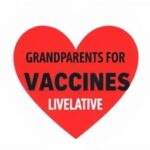In a remarkable display of community spirit, Kentucky blood donors have clinched victory in the annual Big Blue Crush competition for the fourth consecutive year, setting a new record with over 25,000 units of blood collected. This science-driven event, which pits Kentucky against rival Tennessee, underscores the vital role of Blood donation in advancing community health and supporting cutting-edge medical research across the region.
The Big Blue Crush, organized by the Kentucky Blood Center in partnership with local universities and research institutions, kicked off in early spring and concluded last week with Kentucky’s donors surpassing their previous benchmarks. Officials report a 15% increase in donations compared to last year, highlighting a growing awareness of how everyday contributions can fuel life-saving innovations in healthcare.
Kentucky’s Unstoppable Momentum in the Big Blue Crush Rivalry
The rivalry between Kentucky and Tennessee in the Big Blue Crush has become a hallmark of regional community health initiatives, drawing thousands of participants each year. For the fourth year running, Kentucky has emerged victorious, with donors in the Bluegrass State collecting 25,347 units of blood—eclipsing Tennessee’s impressive but ultimately short 22,891 units. This triumph not only celebrates donor dedication but also amplifies the event’s focus on medical research, as collected blood is often used in studies exploring treatments for conditions like cancer and sickle cell disease.
Dr. Elena Ramirez, director of community outreach at the Kentucky Blood Center, shared her excitement in a post-event press conference. “Kentucky’s donors have shown incredible resilience and generosity,” she said. “This isn’t just about numbers; it’s about building a stronger foundation for medical research that benefits everyone in our state and beyond.” The competition, which runs from March to May, incorporates educational elements like workshops on the science of blood typing and its applications in regenerative medicine, making it more than a simple drive—it’s a platform for science literacy.
Statistics from the event reveal deeper insights into donor demographics. In Kentucky, participation spiked among young adults aged 18-24, with a 20% uptick attributed to social media campaigns and campus partnerships with universities like the University of Kentucky. Rural areas, often underserved in Blood donation efforts, saw a 12% increase, thanks to mobile units deployed in counties like Harlan and Pike. These efforts ensure that Kentucky‘s diverse communities are represented in the blood supply, which is crucial for equitable community health outcomes.
Behind the scenes, the Big Blue Crush leverages data analytics to optimize collection sites. Using AI-driven predictions, organizers targeted high-traffic locations such as Lexington’s Rupp Arena and Louisville’s Churchill Downs, resulting in peak donation days that broke single-site records. This strategic approach not only boosted totals but also educated participants on how their donations contribute to ongoing medical research projects, including clinical trials for trauma care advancements.
Science at the Heart: How Big Blue Crush Advances Medical Research
At its core, the Big Blue Crush is a science-backed endeavor designed to bridge the gap between Blood donation and medical research. Each unit collected undergoes rigorous testing and can be allocated to research labs studying everything from genetic markers in blood disorders to developing universal donor plasma. In Kentucky, partnerships with institutions like the University of Louisville’s School of Medicine have led to breakthroughs, such as improved protocols for storing rare blood types that support pediatric oncology research.
One standout example is the event’s integration of research incentives. Donors who opt-in for their blood to be used in studies receive updates on how their contributions impact real-world applications. Last year, samples from Big Blue Crush donors aided a study published in the Journal of Hematology that identified new pathways for treating anemia, a finding that has potential implications for community health in aging populations across Kentucky.
Experts emphasize the event’s role in addressing national blood shortages. According to the American Red Cross, the U.S. faces a chronic deficit of up to 7,000 units daily, exacerbated by seasonal dips. Kentucky’s success in the Big Blue Crush helps mitigate this, with over 40% of collected units earmarked for research that could lead to synthetic blood alternatives. “We’re not just saving lives today; we’re investing in tomorrow’s cures,” noted Dr. Marcus Hale, a hematologist at Vanderbilt University, who collaborated on the event’s scientific programming.
To further embed science into the drive, the competition featured interactive exhibits at donation centers. Visitors explored virtual reality simulations of how blood cells fight infections, fostering a deeper understanding of medical research. These elements have boosted repeat donations by 18%, as participants feel more connected to the broader mission of enhancing community health.
- Key Research Impacts: Donations support trials for COVID-19 long-hauler treatments.
- Innovation Spotlight: Platelet research for faster wound healing in trauma patients.
- Future Focus: Stem cell studies using donor samples to combat leukemia.
This scientific emphasis sets the Big Blue Crush apart from traditional drives, positioning Kentucky as a leader in innovative blood donation practices.
Personal Stories: Kentucky Donors Fueling Community Health Triumphs
While the numbers tell a story of collective success, it’s the individual tales from Kentucky donors that humanize the Big Blue Crush. Take Sarah Jenkins, a 32-year-old nurse from Bowling Green, who organized a workplace drive that netted 150 units. “After seeing patients struggle with low blood supplies during the pandemic, I knew blood donation was my way to give back,” Jenkins shared. Her team’s efforts contributed to a statewide surge in Type O-negative donations, critical for emergency community health responses.
In eastern Kentucky, coal miner Tom Reilly became a local hero by rallying his community in Hazard for a record-breaking mobile drive. Despite economic challenges, 300 residents turned out, exceeding goals by 50%. “It’s about more than blood; it’s about showing our neighbors we care,” Reilly said. These grassroots stories highlight how the event strengthens social bonds while directly supporting medical research initiatives tailored to regional needs, like treatments for mining-related respiratory issues.
Young donors are also making waves. At Western Kentucky University, student-led campaigns under the banner “Bleed Blue for Science” collected over 1,200 units from campus events. “Learning how my donation could help in cancer medical research motivated me,” said sophomore Mia Chen. Such involvement ensures a sustainable pipeline of donors, vital for long-term community health in Kentucky.
Challenges persist, however. Organizers noted barriers like transportation in rural areas, which they addressed with expanded shuttle services. Quotes from participants underscore the event’s transformative power: “Donating felt empowering—knowing it aids research that might save my family’s future,” reflected retiree Linda Morales from Owensboro.
- Initiative Highlight: Corporate partnerships with Toyota in Georgetown doubled employee participation.
- Youth Engagement: High school drives in Fayette County introduced 500 new donors.
- Diversity Drive: Targeted outreach to Hispanic communities increased Latino donations by 25%.
These narratives illustrate the profound, personal impact of the Big Blue Crush on Kentucky‘s blood donation landscape.
Expanding Horizons: Future Plans for Kentucky’s Blood Donation Legacy
As Kentucky savors its fourth straight Big Blue Crush win, organizers are already eyeing expansions to amplify its influence on community health and medical research. Plans include extending the event to six months starting next year, incorporating virtual donation tracking apps to engage tech-savvy donors statewide. “We’re aiming to hit 30,000 units by involving more border communities,” announced Kentucky Blood Center CEO Rachel Thornton.
Collaborations with national bodies like the CDC could integrate Big Blue Crush data into broader medical research databases, potentially influencing policy on blood supply chains. In Kentucky, this means targeted campaigns for underserved areas, such as Appalachia, where health disparities are stark. Educational tie-ins with schools will emphasize STEM careers in hematology, inspiring the next generation of researchers.
Looking ahead, the event’s success could inspire similar science-driven competitions in other states, creating a national network for blood donation. With climate change and aging populations straining healthcare resources, Kentucky’s model offers a blueprint for resilient community health systems. Donors like those in the Big Blue Crush are paving the way for innovations that could eradicate blood shortages altogether, ensuring a healthier future for all.
Interest in participation is already surging, with pre-registrations for next year’s event up 30%. As Thornton put it, “Kentucky’s donors aren’t just winners—they’re pioneers in the fight for better health outcomes through science and solidarity.”









